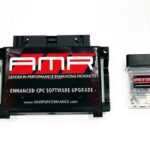For any car owner in the UK, understanding your vehicle’s health is crucial. Modern cars are complex machines, and when something goes wrong, the problem might not always be obvious. This is where an OBD2 diagnostic tool becomes invaluable. These devices have rapidly become essential for home mechanics and car enthusiasts alike, offering a straightforward way to read engine fault codes, diagnose issues, and potentially save significant money on garage visits.
Are OBD2 scanners a worthwhile investment? Absolutely. They provide the quickest route to understanding what’s ailing your car. Without an OBD2 reader, identifying a fault code often means a trip to a garage, incurring labour charges that can quickly add up. Considering that hourly labour rates at independent garages in the UK average around £50, investing in your own diagnostic tool makes economic sense. When you combine an OBD2 fault code reader with resources like Haynes AutoFix online guides, you gain the ability to diagnose and address many common faults and electrical problems yourself, right at home with basic tools.
The market offers a wide array of OBD2 readers, from basic to advanced, but their core function remains the same: to communicate with your car’s computer and help you understand what’s happening under the bonnet. Many of these tools are priced less than a single garage diagnostic fee, making them a smart purchase. But with so many options, how do you choose the best OBD2 diagnostic tool in the UK for your needs?
Understanding the Basics of an OBD2 Reader
Traditionally, an OBD reader is a handheld diagnostic device that plugs into your car and interprets data from its onboard computer to display fault codes and other information. Prices range from budget-friendly options under £20 to professional-grade scanners costing hundreds. Regardless of the price, a functional OBD2 scanner should meet certain minimum requirements:
- Establish communication with your vehicle’s system.
- Accurately read and display fault codes.
- Allow you to clear fault codes after repairs.
It’s important to note that while most OBD2 scanners can read and clear fault codes, many basic models may not handle advanced functions like resetting service lights or managing systems like ABS (Anti-lock Braking System) or SRS (Supplemental Restraint System). For these more complex tasks, resources like Haynes AutoFix can provide step-by-step guidance to supplement your OBD2 tool.
Search for Haynes AutoFix for my car now
How OBD2 Systems Work in UK Vehicles
OBD stands for On-Board Diagnostics. The OBD2 system utilizes a standardized 16-pin port, which might visually resemble an older SCART connector. In Europe, this system is often referred to as EOBD (European On-Board Diagnostics), but it’s essentially the same standard as OBD2 used globally. This port has been mandatory in all petrol passenger cars sold in the UK since January 1, 2001, and for diesel cars since 2004.
An OBD2 port in a vehicle, the standard interface for diagnostic tools in UK cars.
The OBD2 port not only provides a communication interface but also supplies power to the diagnostic tool. This eliminates the need for separate power sources like batteries or power cables for the OBD2 scanner itself, simplifying its use and making it convenient for quick diagnostics.
